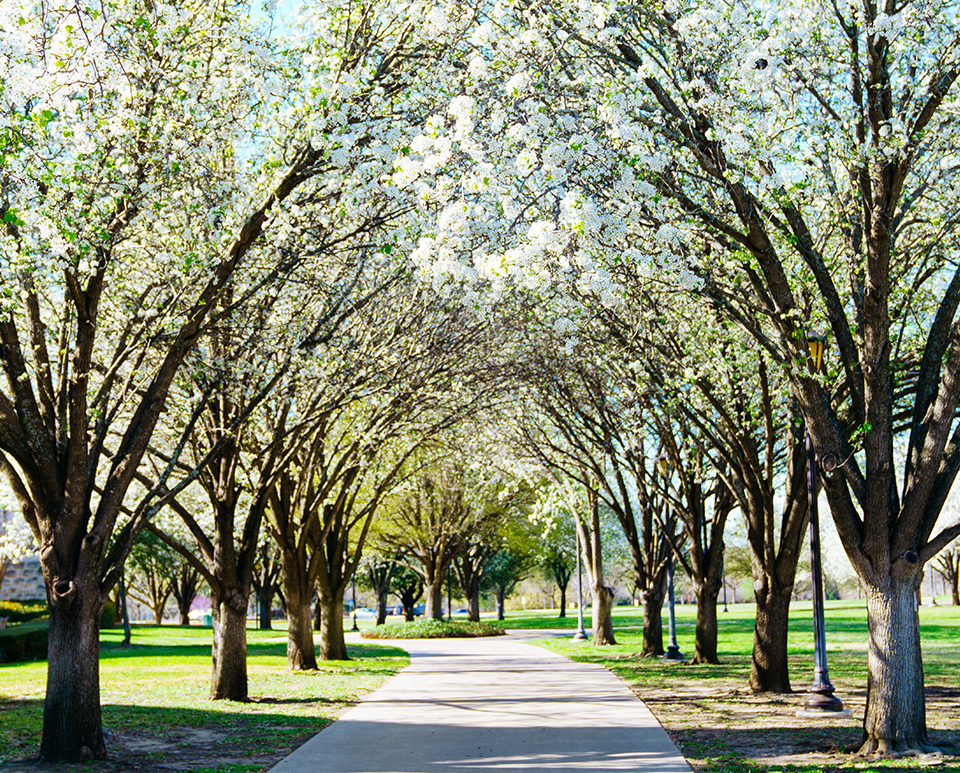News
Capstone in the Time of COVID
March 17, 2021
March 17, 2021
Open gallery

When I first enrolled at SU, I came in with a pretty clear idea of what I wanted to major in and declared myself an English major the first chance I got. That meant I’d known about my eventual capstone requirements pretty early on, although it always managed to remain tucked away in the back of my mind. While the exact framework for English capstones varies from semester to semester, the general premise is the same: you conduct research on a topic of your own devising that aligns with the theme of the seminar, write a roughly 25-page paper, then give an eight-minute presentation to the English faculty, your classmates, and anyone else who might be in attendance. That sounds daunting enough in and of itself—heck, I’m done, and I still cringe a little reading that—but toss in having to navigate a global pandemic while putting such a major project all together to eventually give your presentation to a screen is, well, challenging. While that may seem like a downer at first glance, I assure you, not all was lost! Like every other aspect of life, COVID transformed capstone into not just a challenge but an opportunity to adapt or approach familiar tasks with creative problem-solving.
COVID transformed capstone into not just a challenge but an opportunity to adapt or approach familiar tasks with creative problem-solving.
The process
The structure of the English capstone seminar actually lent itself pretty well to distance learning. We spent the first half of the semester reading and discussing novels and critical theory to give us all a pool of knowledge and inspiration we could draw from, so that portion was conducted relatively similarly to any other hybrid (in-person and remote) course. And the actual process of conducting our research and drafting our papers was always going to be a mostly solo endeavor, pandemic aside. The few exceptions to this were the virtual meetings with our professor to discuss progress and get help and virtual peer-editing sessions.
The latter were definitely where having to interact virtually was the most noticeable. I hadn’t realized how much body language and being able to give off good vibes factored into peer-editing sessions I had done before COVID. It was still an overwhelmingly positive experience, but when you’re having to do something that can be as sensitive as editing someone else’s work, it can feel a little cold doing it over email or Zoom. On the other hand, looking at someone else’s work before class and having to provide preliminary written feedback actually greatly improved the quality of my edits and suggestions. While it’s nice being able to sit next to someone and physically mark up their paper, that likely won’t be the case in an office setting, pandemic or no pandemic. Socially distanced peer editing gave me more time to engage with my partner’s work and made me even more careful than usual, which will definitely come in handy in workplace situations where collaborations are more likely to be totally virtual.
The big day
Aside from the general stress of just existing in 2020 and having to research and write a 25-page academic paper, I’d say the impact of COVID on my capstone was most intensely felt the day of the presentation itself and in the days leading up to it. Prior to the moment of truth, I was insanely paranoid about technical difficulties. I spent two straight days setting up dozens of practice video calls (thanks, Mom!) in every room of my house trying to figure out where I had the best reception, lighting, sound, etc. I spent all of that time angsting about the presentation, and I was still worried even after clicking on the “Join Meeting” button because I was slated to go last. But after seeing everyone else’s stellar presentations go so smoothly, my mind was a little more at ease.
After months of buildup, it was finally my turn. I began presenting my slideshow when I suddenly realized something: I couldn’t see the audience. Granted, I was already expecting this because of all the practice meetings I had set up before, but it was definitely a different experience talking to a PowerPoint knowing only one person is watching versus 40 or 50. But as someone who consumes copious amounts of content on YouTube, I imagined that I was simply making a video of my own and tried to emulate some of my favorite creators—and it worked! Not only did my presentation go smoothly and was received well, it was a lot of fun to give!
The takeaways
Besides the expected, appropriate level of stress and the slight alterations to the process, what did I ultimately get out of capstone in the time of COVID? First and foremost, I had to get really good at having a “presence” while on a conference call. I’ve obviously had experience engaging with an audience in person, but engaging a virtual audience when you can’t see them—or yourself—requires a much more developed sense of self-awareness. You have to put in extra effort to maintain eye contact with your camera and gesture in a way that’s visible but still feels natural. This was definitely the most valuable practical takeaway. Even in a post-COVID world, virtual presentations and remote work won’t be going away, and having practiced so much for such a high-stakes project greatly improved my communication skills in a relatively short period of time.
Looking back, did my experience feel like a “true capstone” in spite of the COVID-imposed restrictions? I’m not quite sure how to answer that since I don’t really have a point of reference. I certainly had no complaints about not having to stand in front of 40-plus people. But there were definitely some in-person aspects I missed, especially when it came to peer editing. I miss the days of working with fellow capstone students out on the Academic Mall, in the study rooms in the library, or even in class. But rather than focusing on what COVID may have taken away from the experience, I think what remained was truly at the heart of the experience: I still got the opportunity to explore in-depth a subject I was truly invested in and challenge myself as an English major, researcher, presenter, and person. While my capstone experience was not necessarily what I envisioned when I first came to SU, it was an experience I found a great sense of joy and accomplishment in.















